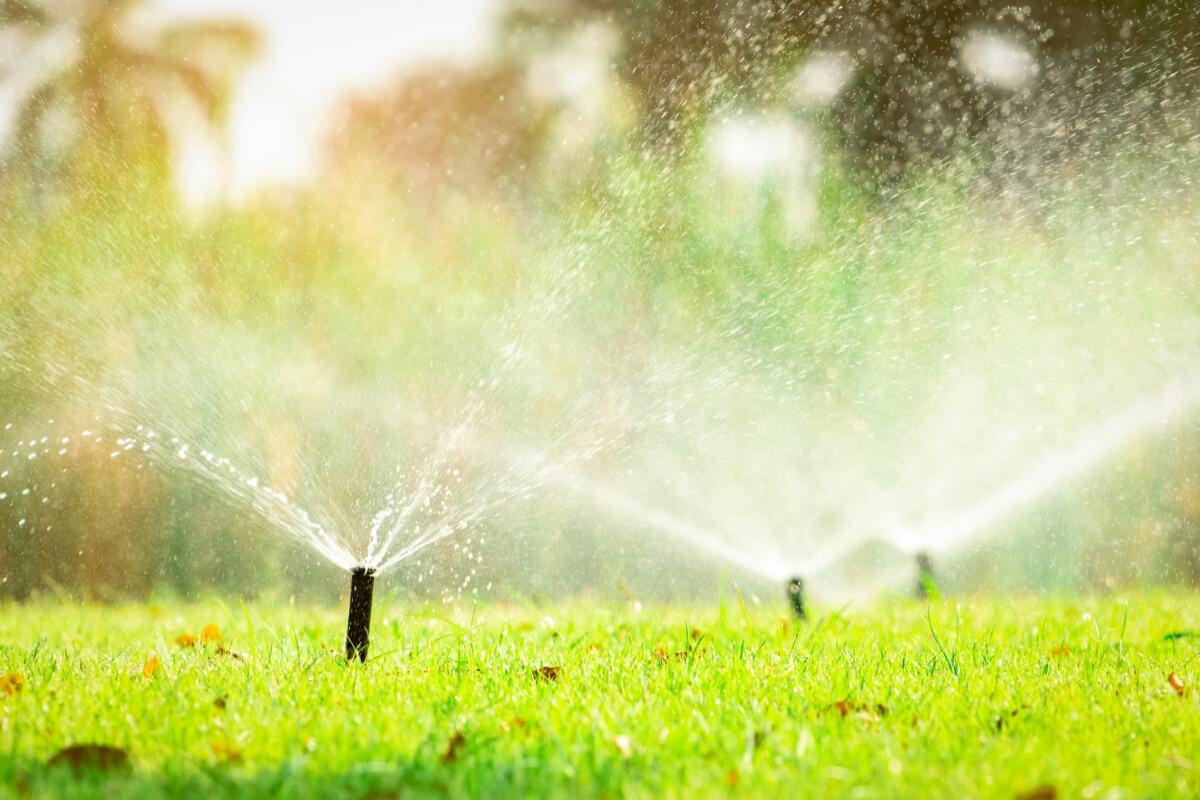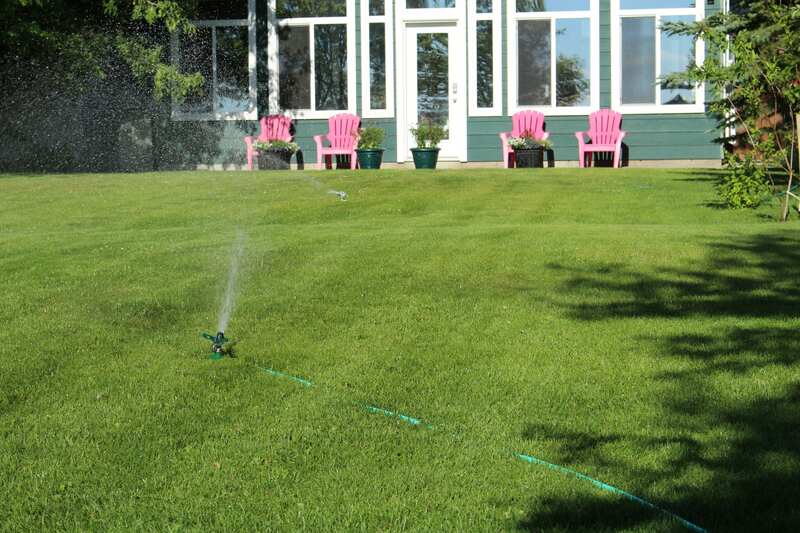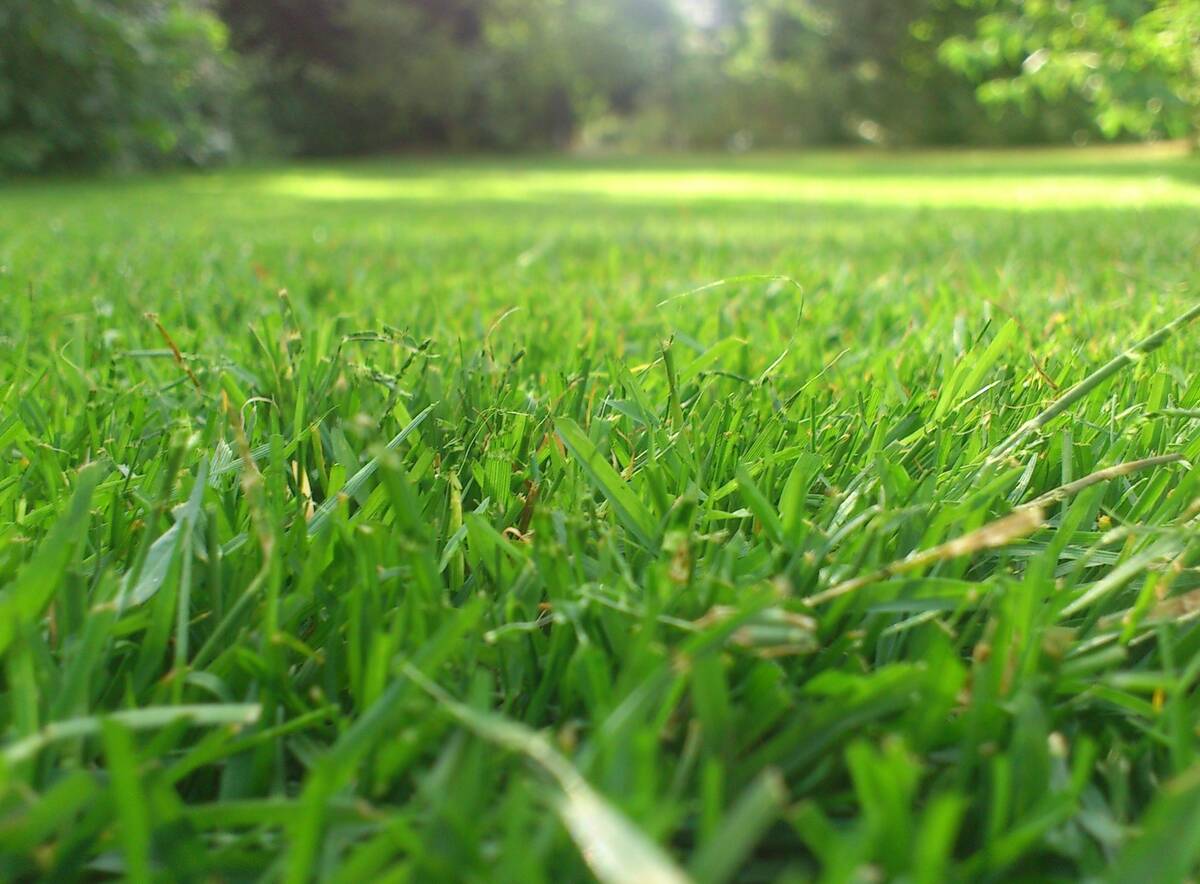
As the sun claims its place in the sky during the warmest months, homeowners often wonder exactly how long to water their lawn in summer to maintain that lush, green paradise. On average, the sweet spot for watering your lawn is between 25 to 30 minutes each session.
However, achieving that deep, healthy green isn’t just a matter of setting a timer and walking away — it’s a delicate balance that depends on a few factors, which we’ll dive into in this article.
Average Watering Time in Summer

As temperatures rise, so does the notion that constant hydration is the key to a healthy lawn in the summer. However — it is not. Experts recommend the “one-inch rule,” providing your lawn with 1 inch of water per week, including rainfall.
Depending on the efficiency of your sprinkler system, this translates to approximately 25-30 minutes of watering, ideally done twice a week.
Why twice a week, you may wonder? The objective is deep watering. Quick, daily waterings often lead to shallow root systems, causing grass to become less resistant to stress and drought conditions. In contrast, deep watering encourages the roots to grow further into the soil, where moisture remains even under the summer heat.
Calculate Your Lawn’s Watering Duration
Knowing how long to water your lawn in summer is not a guessing game but a science you can understand and master. The best way to estimate your lawn’s watering time is by conducting an irrigation audit with the “catch can test.” Here’s how you do it:
- Step 1: Begin by arranging at least six straight-sided containers, like coffee mugs, empty tuna cans, or a rain gauge around your lawn, spacing them evenly. These cans will catch the water, mimicking the role of your soil on a miniature scale, and provide you with a measurable amount of water your grass receives.
- Step 2: With your catch cans in place, turn on your sprinklers. Let them run for exactly 20 minutes to have a substantial sample size for more accurate calculations.
- Step 3: Once the time is up, use a ruler to measure the depth of water in each container.
- Step 4: Add together the individual measurements from all the containers. Then, divide this total by the number of containers you’ve used. This calculation gives you the average depth of water your lawn received during the testing phase.
- Step 5: Take the average water depth and multiply it by 3. This figure represents the estimated inches of water your sprinkler system delivers per hour (since 20 minutes equals one hour divided by three).
Armed with this specific information about your sprinkler system’s output, you’re now equipped to adjust your watering schedule tailored perfectly to your lawn’s characteristics.
The table below presents the time different types of sprinklers will take to deliver the standard 1 inch of water based on its output. Use that to estimate how long to water your lawn based on how many days a week you plan on watering it:
| Sprinkler output (inches per hour) | Time to deliver 1 inch of water | Twice a week schedule (minutes per session) | Three times a week schedule (minutes per session) |
| 0.5 | 2 hours | 60 | 40 |
| 1 | 1 hour | 30 | 20 |
| 1.5 | 40 minutes | 20 | 13.3 |
| 2 | 30 minutes | 15 | 10 |
Factors Determining Your Lawn’s Thirst in Summer

The duration and frequency of watering your lawn during the scorching summer months can be influenced by several key factors:
*The watering durations presented here are estimates based on a sprinkler output of 1.5 inches per hour.
Grass Type
Warm-Season Grasses
Warm-season grasses like Bermuda, Zoysia, and St. Augustine are known for their drought tolerance and ability to thrive in hot, summer conditions. These grasses typically benefit from deep, infrequent watering sessions. During the summer, it’s advisable to water your warm-season grasses approximately twice a week.
The optimal watering duration for these grasses can vary depending on your sprinkler’s output and the specific variety of warm-season grass you have. In general, a watering session of 20 minutes per session should be enough.
Cool-Season Grasses
In contrast, cool-season grasses such as Kentucky bluegrass, fescue, and ryegrass have higher water requirements during the hot summer months. These grasses thrive in cooler climates but may struggle with moisture retention in scorching heat.
For cool-season grasses, aim to water your lawn approximately three times a week during the summer season. However, the duration of each watering session should be slightly shorter, around 15 minutes per session.
Soil Type
Sandy Soil
Sandy soil is known for its excellent drainage properties, but it doesn’t hold water well. Consequently, lawns with sandy soil often require more frequent watering during the hot summer months.
You may need to water your lawn up to three times a week for sandy soil, with each session lasting around 15 minutes.
Pro Tip: Amend your sandy soil to improve its ability to store water and support a healthy lawn.
Clay Soil
Clay soil retains water more effectively than sandy soil but can become compacted and waterlogged if overwatered. For lawns with clay soil, a once-a-week watering of 40 minutes is generally sufficient during the summer.
A good tip is to use the cycle and soak method, which involves breaking the watering session into multiple cycles with intervals for the water to soak into the soil between them. So, instead of running your sprinklers for a continuous 40-minute duration, divide it into three cycles of around 13 minutes, with a 30-minute interval between them.
Loamy Soil
Loamy soil, often considered the ideal soil type for lawns, offers a balance between water retention and drainage. Lawns with loamy soil typically require a moderate watering schedule during the summer months. Water your lawn approximately twice a week, with each session lasting around 20 minutes.
Weather
Your location and the climate of your region can greatly influence how often and how long you should water your lawn to keep it healthy and thriving.
If you reside in areas known for receiving consistent summer rainfall, such as the East Coast, you may not need to water your lawn as frequently or for extended periods. Nature often takes care of your lawn’s moisture needs.
In contrast, if you live in regions susceptible to summer droughts, like the southern United States, adhering to a regular watering schedule becomes essential to prevent your lawn from becoming stressed or going dormant.
New Seeds or Sod
Newly Planted Seeds
Initially, water the grass seeds two to three times a day, but keep each watering session brief, typically around 5 to 10 minutes each time. This frequent, gentle watering helps create the optimal environment for germination.
Once the grass seeds begin to sprout, which usually occurs after approximately two weeks, transition to a daily watering routine to continue fostering healthy growth.
Newly Installed Sod
In the summer months, it’s advisable to provide deep and thorough soaking to encourage robust root development for the newly installed sod. To achieve this, water your new sod twice a day for around 15 minutes each session, ensuring that the soil becomes adequately moist but not waterlogged.
After about two to three weeks, once the sod has firmly taken root and established itself, you can adjust your watering routine to the standard guideline of providing approximately 1 inch of water per week.
When to Water Your Lawn in Summer
Avoid watering your lawn in the peak afternoon hours when the sun is blazing. At this time, the water you generously sprinkle on your lawn doesn’t fully serve its purpose, as a significant portion of it rapidly evaporates due to the high temperatures. Consequently, your lawn doesn’t receive the deep soak it requires for roots to absorb nutrients.
Conversely, nighttime watering comes with its own set of drawbacks. While it may seem reasonable to water your lawn when temperatures are cooler, doing so at night can create a damp environment that becomes a breeding ground for fungal diseases.
So, when should I water my lawn in summer? To strike the right balance, the best time to water your lawn is early morning, between 4 and 8 a.m. During these hours, water can seep deep into the soil, reaching the roots without the risk of quick evaporation or extended surface dampness.
Recognizing When Your Lawn Needs Water

Maintaining the right balance of moisture is crucial for the health of your lawn. Overwatering and underwatering can have detrimental effects, but by recognizing the signs, you can adjust your summer watering routine to keep your lawn thriving.
Overwatering Signs
- Soggy soil: One of the most apparent signs of overwatering is excessively wet and soggy soil. If the ground feels consistently squishy and mucky, you may be watering too much.
- Puddles and runoff: Puddles or runoff occurring after lawn watering are clear indicators of excessive moisture. If you notice water pooling on the surface or running off your lawn, it’s a sign to cut back on watering.
- Fungal diseases: Overwatered lawns often become breeding grounds for mushrooms and fungal diseases.
- Yellowing grass: Overwatered lawns may develop yellow or pale-green patches, signaling nutrient imbalances and poor root health.
Underwatering Signs
- Dry, cracked soil: Insufficient watering can result in dry, cracked soil. If the ground appears parched and breaks apart easily, your lawn likely needs more water.
- Stunted growth: Underwatered lawns may exhibit slow or stunted growth. If your grass isn’t reaching its expected height or looks sparse, it’s likely lacking water.
- Footprints: If footprints or mower tracks persist long after being made, it’s a sign that the grass is too dry to bounce back.
- Yellowing grass: Both overwatering and underwatering can cause yellowing of the grass. When grass turns yellow, it’s an indication of stress and should prompt a careful assessment of your watering practices.
FAQ About Summer Watering
Why Isn’t My Lawn Getting Enough Water?
Your lawn may not be receiving the water it needs despite your efforts to water it adequately. Two common reasons for this issue are:
- Thatch buildup: Thatch is a layer of dead grass and organic matter that accumulates on the soil’s surface over time. An excessive thatch layer can block water from reaching the grass roots, leading to runoff and a dehydrated lawn. Dethatch your lawn to remove this layer and improve water infiltration.
- Compacted soil: Compacted soil occurs when soil particles become tightly packed, restricting water and air movement. This prevents water from penetrating the soil effectively. Aerate your lawn to alleviate compaction, allowing water to reach the roots and enhance overall soil health.
Should You Water Grass Every Day in Summer?
No, you should not water grass every day in summer. Watering your lawn daily can lead to shallow grass roots, soil sogginess, and an increased risk of fungal diseases. Instead, opt for deep and infrequent watering to encourage the development of resilient and deep root systems.
How Often Should I Water My Lawn?
As a general guideline, aim to water your lawn two to three times a week. However, your soil type, grass type, the amount of shade in the yard, and weather conditions will impact how often you water your lawn.
Call in the Professionals
Now that you’ve learned how to estimate the ideal watering duration for your lawn in summer, you’re one step closer to maintaining a vibrant and healthy outdoor space. However, summer lawn care involves a multitude of factors, from mowing and fertilizing to watching out for weeds.
To truly elevate your lawn’s well-being and transform it into a lush paradise, consider enlisting the expertise of professionals. They can guide you through the intricacies of seasonal lawn care, ensuring that your lawn flourishes in every way possible.
Mai Photo Credit: Fahroni / Canva Pro / License




